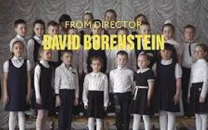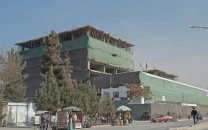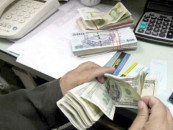Stitch in time
Amongst the devastation wrought by typhoon Haiyan, hundreds of Filipino women weavers have emerged as breadwinners

A year after one of the world’s most powerful storms smashed into the Philippines, a group of women are stitching their lives back together by weaving colorful reeds used in handicrafts sold by the world’s top retailers.
Sitting in one of the caves dotting the seaside highway of Basey town in central Philippines, about a dozen women weave the reed plant, known as tikog, which is sold to sustain their families still struggling to make ends meet after Typhoon Haiyan left more than 7,000 dead or missing last Nov 8.
“Weaving helps feed our families. But we haven’t really recovered, we still don’t earn enough,” said Marilyn Corpus, 46, from inside the cave whose cool temperature helps preserve the grass.
Amongst the despair and devastation wrought by Haiyan, the strongest storm ever recorded to hit land hundreds of women weavers have emerged as the main breadwinners in their families.
Most of the weavers say they received relief and building materials for their homes from foreign and local NGOs and private groups, but none from the government, possibly because of their remote location.
But theirs is a rare story of hope in the region’s rural economy, which was mainly dependent on the coconut groves destroyed by the storm.
The UN’s International Labour Organization (ILO) says nearly 6 million lost their jobs immediately after the typhoon — mostly retailers, service crew, coconut farmers, and fishermen.
Most of those from the 44 worst-hit provinces in the center of the country decry the government’s relief effort.Some of the coconut farmers are now growing vegetables and have livestock, while some fishermen have returned to the seas, albeit only to shallow waters reachable by their unmotorised boats. But for most of the typhoon victims, a more sustainable livelihood is still far from sight.
“We’re seeing very good signs of recovery, but we’re not there yet,” said Michel Rooijackers, deputy director for Philippine operations of Save the Children, adding that recent studies show many of the poor survivors “are just meeting their survival level, so they are getting by, just getting by.”
Almost 25,000 people still live in tents, shelters and bunkhouses in the hardest hit regions in central Philippines, including Tacloban City, considered Haiyan’s ground zero as it accounted for almost half of the death toll.
Weaving their magic
A year later, Samar’s women weavers stand out as being among the most resilient and industrious workers. Weeks after the typhoon, aid organisations identified the weavers as being critical in holding families together — both socially and as primary income earners. They were given training and funding to optimise their household standing.
Philippine fashion company Banago, whose bags and home accessories are made from mats produced by Basey weavers, has doubled its workforce since the storm to about 1,000 weavers. The Banago range is a top seller at high-end retail stores such J Crew, Anthropologie, Nordstrom and Macy’s.
Haiyan washed away Banago’s entire production facilities in Basey, but the company’s founder Renee Patron and her partners decided to restart their business a few months after the disaster struck.
“The typhoon made the business more focused, and it also gave me the opportunity to learn much more about the women ... and how we can make their lives better,” said Patron.
“We had the women rebuild their homes and after that we just tried to get them back to work,” said the US based merchandiser and fashion designer.
Published in The Express Tribune, November 8th, 2014.
Like Life & Style on Facebook, follow @ETLifeandStyle on Twitter for the latest in fashion, gossip and entertainment.



















COMMENTS
Comments are moderated and generally will be posted if they are on-topic and not abusive.
For more information, please see our Comments FAQ